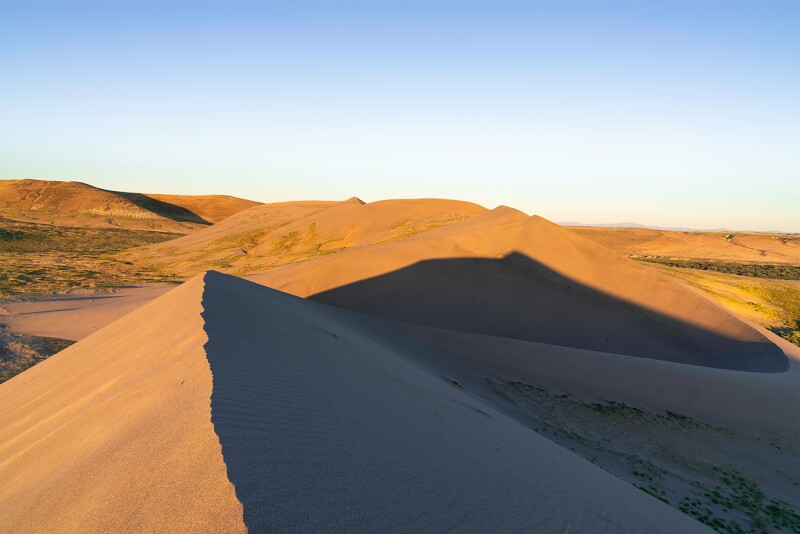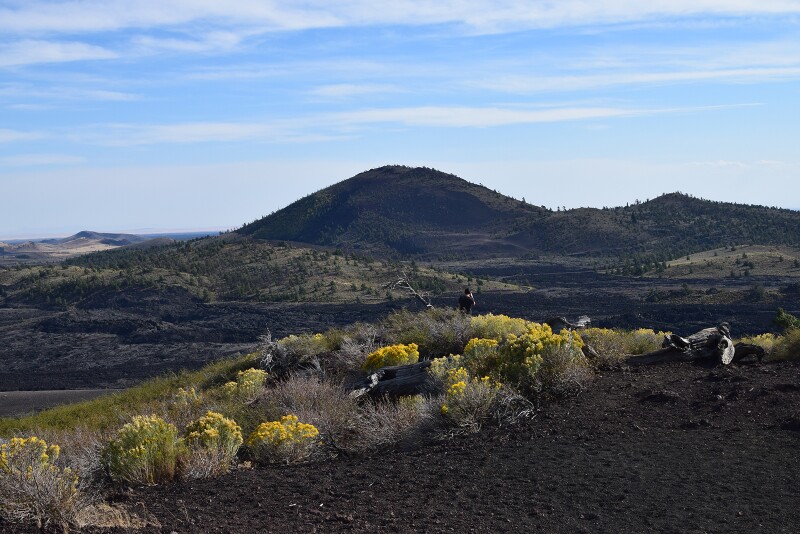Perhaps it’s a curse of geography. Oregon, Washington, and Montana are well known for their diverse outdoor offerings, but the triangular state sandwiched between them often falls under the radar. And yet, within Idaho’s wonky borders adventurers can find vast stretches of public lands, glorious mountains, volcanic moonscapes, and enticing rivers that have carved out some of the country’s deepest canyons. Idaho more than deserves a place in the spotlight as an outdoor playground for every month of the year.
Fun in the summertime in Idaho
Summer is prime time for taking advantage of the annual snowmelt that sends big waves down rivers like the Snake and the Salmon, two of Idaho’s best rafting arteries. The Salmon River commands more than its share of superlatives: It’s the longest free-flowing river in the Lower 48 states; it slices through the excellently named Frank Church River of No Return Wilderness, the Lower 48’s second-largest wilderness area, and passes through the second-deepest gorge in North America, the Salmon River Canyon.
Idaho also shares—with neighbor Washington State—the deepest gorge on the continent, Hells Canyon. The best way to explore it is from a raft floating down the Snake River, so sign up for single- or multiday itineraries with respected rafting companies like OARS and Yellow Jacket River Guides.
For a less bouncy but still spectacular summer diversion, grab a stand-up paddleboard from AWOL Adventure Sports in Centennial Waterfront Park in Twin Falls. From here, you can paddle leisurely along the Snake River or undertake a longer adventure and head to the base of the 212-foot Shoshone Falls, nicknamed “The Niagara of the West.” While most visitors don’t venture beyond the overlook at the top, which you can simply drive to, the view is even better from the water.
In 2025, the Jaialdi festival celebrating Basque culture and community in Boise returns after a 10-year hiatus. The event is normally held every five years, but the country’s biggest Basque bash was canceled due to the COVID-19 pandemic, so ’25 should be extra special.

The Bruneau Dunes are even more striking when surrounded by the colors of autumn.
Photo by Erin Campbell/Shutterstock
Exploring sand dunes and climbing spots in the fall
Fall is the best season to visit the tallest freestanding sand dunes in North America at Bruneau Dunes State Park. For thousands of years, wind has whipped the sand into 400-foot shifting hills of sand. The state park is open for camping, climbing, and even sandboarding down the dunes. At this time of year, the sand’s mild color is offset by fall’s more vivid displays. Another plus? On Friday and Saturday nights through mid-October, Bruneau Dunes Observatory holds free night sky and solar viewing, starting one hour before sunset.
Autumn visits mean no summer crowds at sought-after climbing spots City of Rocks National Reserve and Castle Rocks State Park. Both also feature excellent mountain biking paths that loop around the formations.
Although just as impressive as the Rocky Mountains or the Sierra Nevadas, the majestic Sawtooth Mountains get less attention. Some of the range’s showiest stuff can be seen with a 6.8-mile hike up to Goat Lake, where you’ll find the tallest waterfall in the range as well as an alpine lake at the foot of a snow-flecked granite wall. Goat Lake sits at more than 8,000 feet, but the trail stays snow-free into early fall most years.

Spend a bluebird day at Bogus Basin ski area near Boise.
Photo by Shutterstock
Snow play and skiing in winter
Grab your snowshoes and head to Bogus Basin, just outside of Boise, where you can glide along high ridge lines amid snow-capped peaks. Another local favorite spot for snowshoeing—as well as Nordic skiing—is Ponderosa State Park, near McCall, where groomed trails skirt the frozen expanse of Payette Lake and the surrounding mountains. Downhill skiers and snowboarders can hit the powder at well-regarded ski hills like Boise’s Bogus Basin, Pomerelle Mountain Resort between Pocatello and Twin Falls, and Sun Valley.
Thaw out at the Springs, a natural hot springs facility with a 104-degree hot tub and a steam sauna—though be sure to make reservations, as the retreat in Idaho City caps its visitor numbers. Or outside Pocatello, try Lava Hot Springs Pools, where the pools are heated to a range of temperatures for that perfect Goldilocks soak.

See wildflowers growing on lava outcroppings at Craters of the Moon National Monument.
Photo by Rui Serra Maia/Shutterstock
Memorable spring hikes and spectacular flowers
Walk or mountain bike through a riot of wildflowers blooming amid the black lava and cinder cones at Craters of the Moon National Monument and Preserve. You’ll avoid summer’s crowds and high temperatures by coming at this time of year, and get to witness the spring bird migration, with an exciting array of avian life passing through, including swans, herons, and lots of songbirds and waterfowl. Craters of the Moon, which is celebrating its centennial in 2024, is also a designated International Dark Sky Park, so cross your fingers for clear skies during your visit so you can stay up late and stargaze.
On the western edge of the state, enjoy hiking the Snake River Trail at Hells Canyon before the heat of summer grips the region. The canyon is one of the lowest points in Idaho, so spring often arrives here earlier than in the rest of the state. The season offers deep solitude in the canyon, too: On the hike in early spring, you’re more likely to see bighorn sheep, wild turkeys, and bald eagles than the jet boats that growl up and down the river after Memorial Day. The trail is carved out of the sheer canyon walls, which drop down to sandy beaches along the river. Day hikes as well as multi-day forays are possible starting from Pittsburg Landing, one of the few access points for this remote slice of Idaho.
This article was originally published in October 2019 and was updated in June 2024 with new information.











